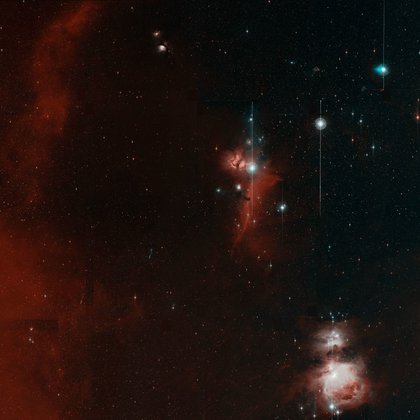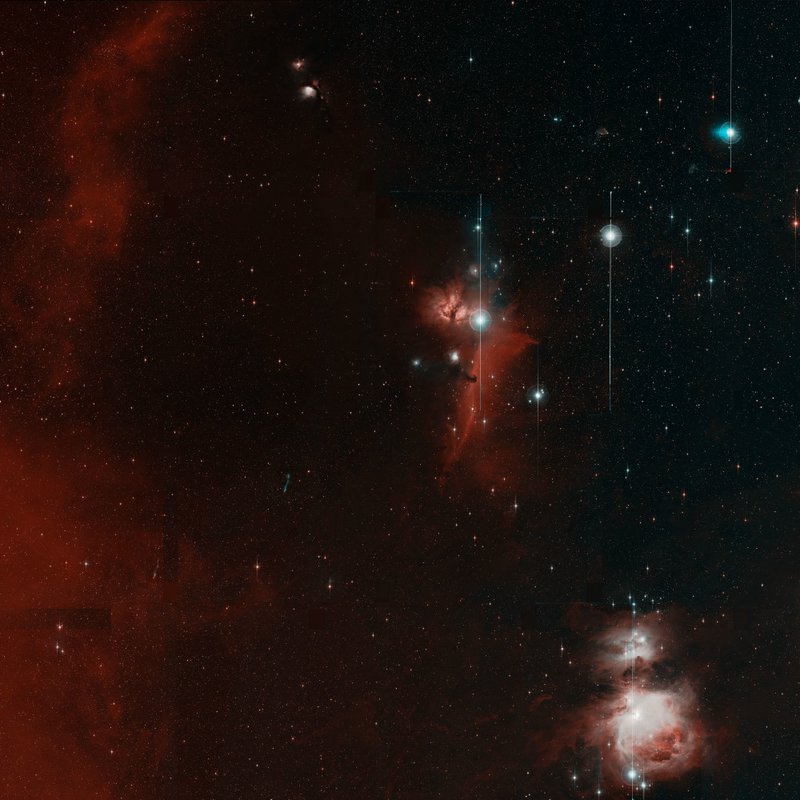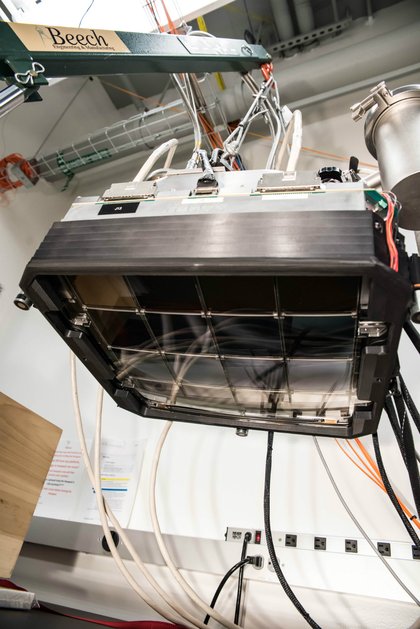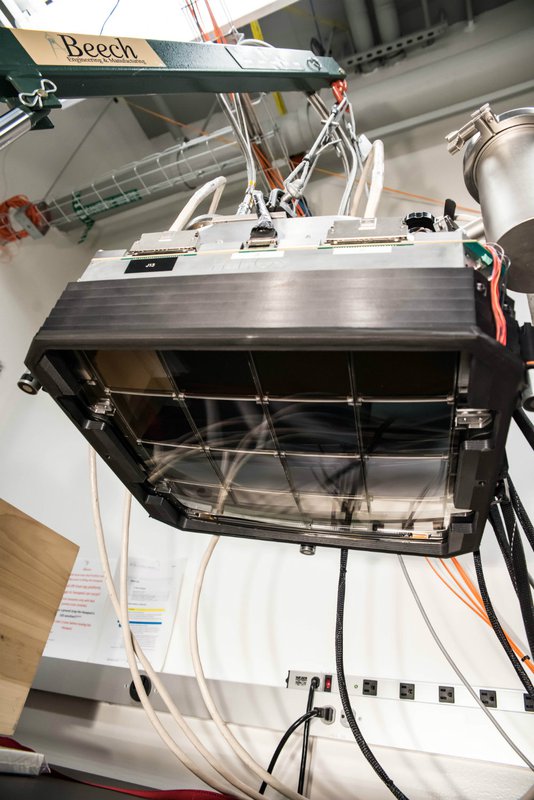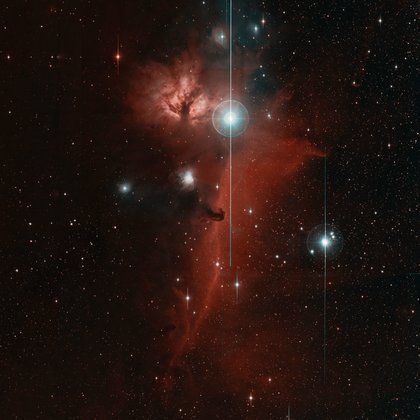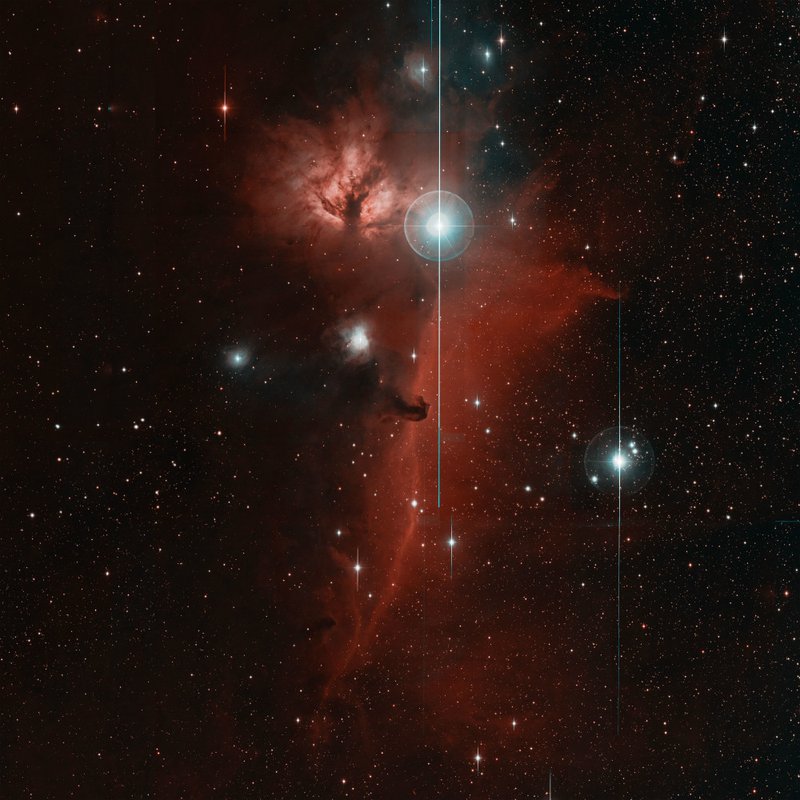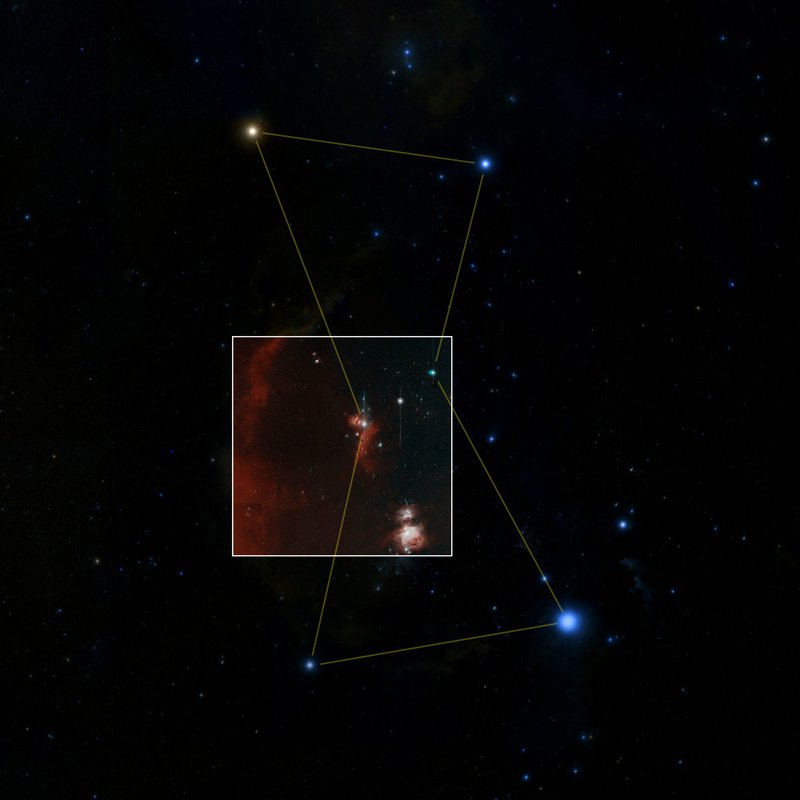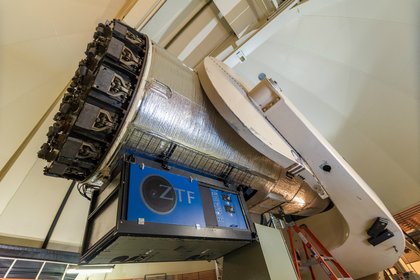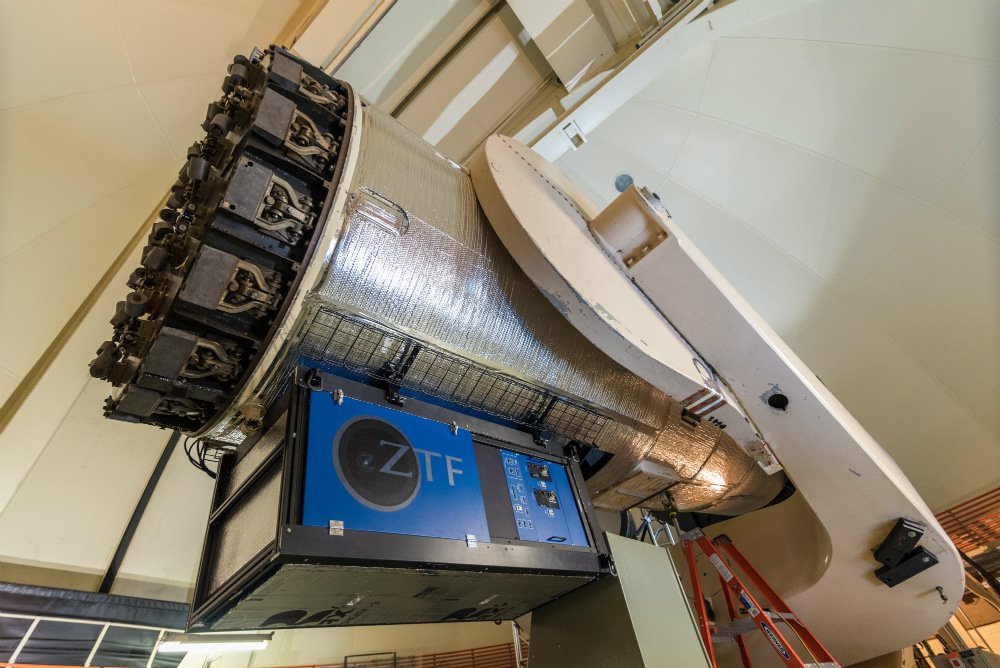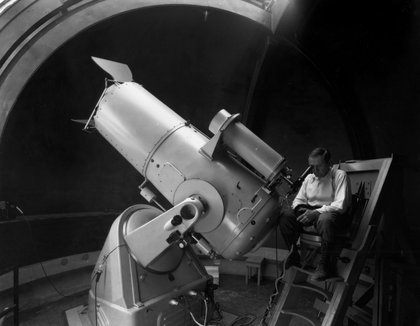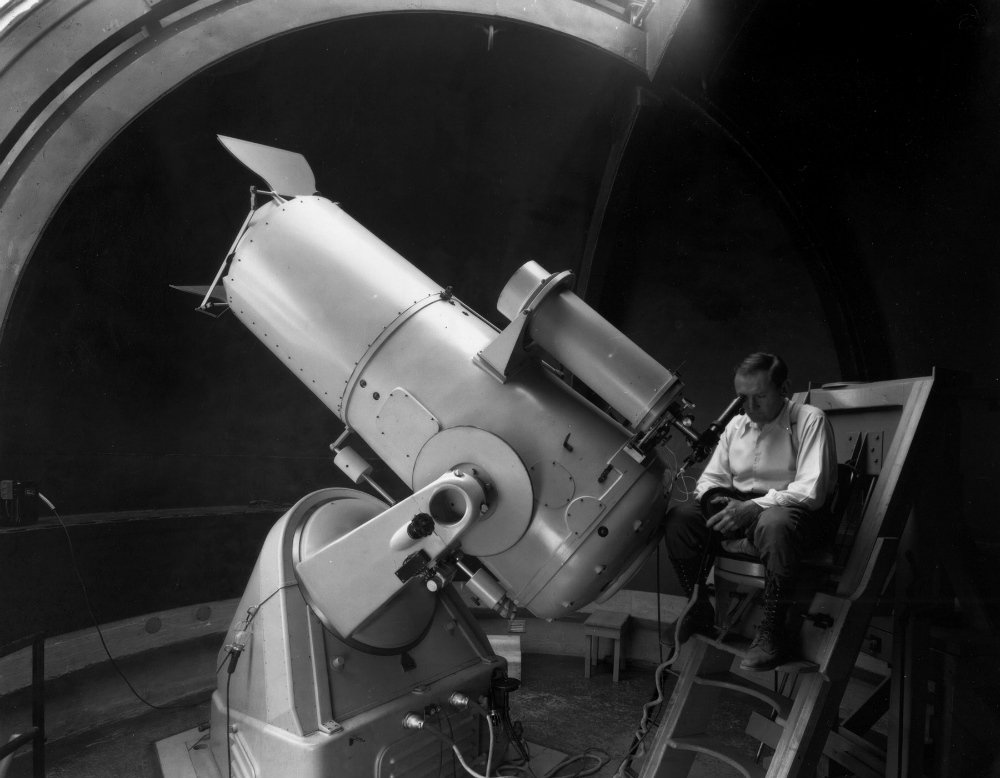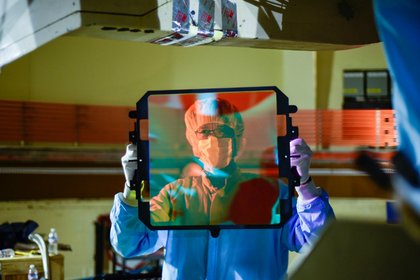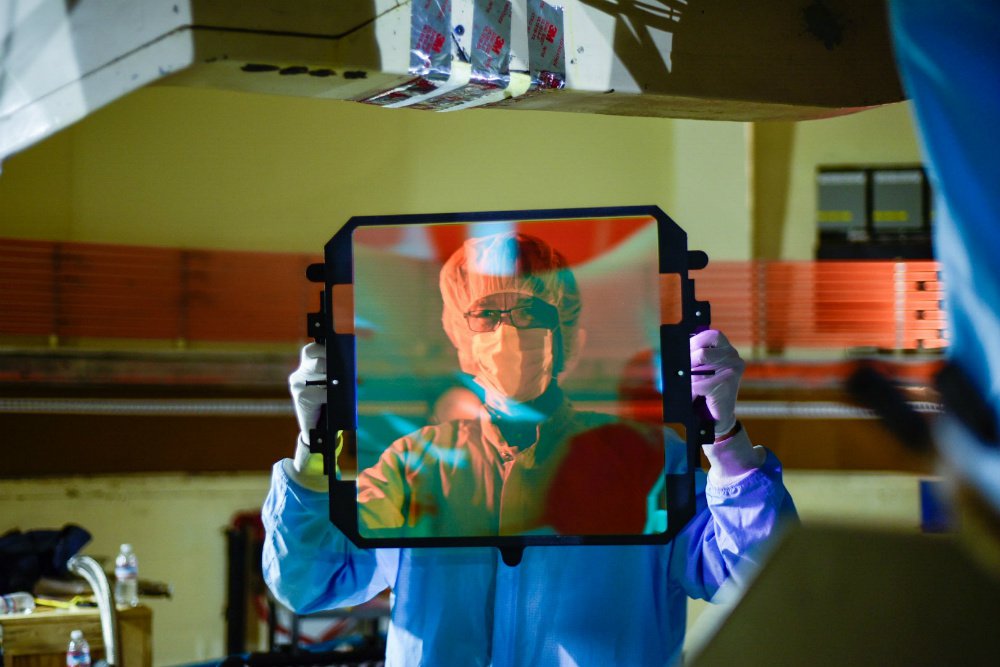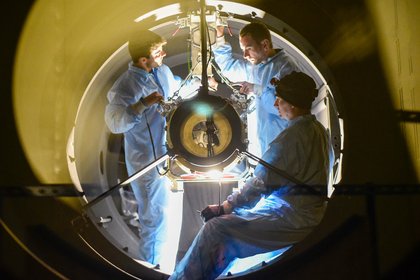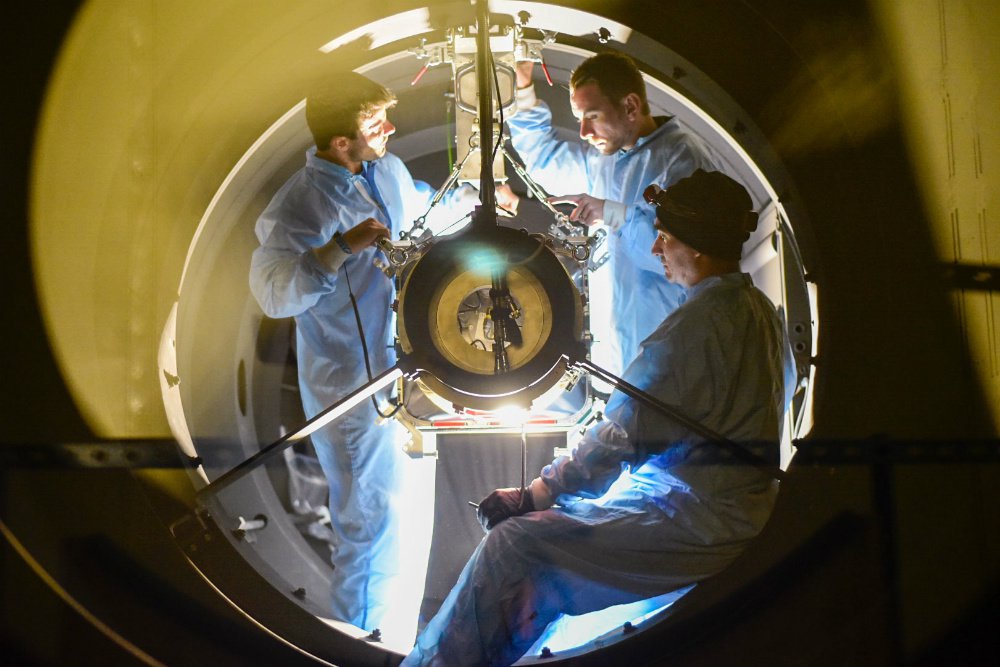Zwicky Transient Facility Opens Its Eyes to the Volatile Cosmos
MEDIA CONTACT
Whitney Clavin
Senior Content and Media Strategist
[email protected]
626-395-1856
A new robotic camera with the ability to capture hundreds of thousands of stars and galaxies in a single shot has taken its first image of the sky.
Assets on this page are subject to the site Use Policy.
Go to: Use Policy | Images | Video | Media Contact | Additional Resources
Use Policy
Images, videos and other media assets (Content) on this page may be used for educational or other non-commercial purposes with credit to Caltech, or as otherwise designated, as long as modifications are not made to the content. All or portions of the Content may be used for news or journalistic purposes with credit to Caltech, or as otherwise designated. Commercial uses require a separate permission from Caltech Media Relations.
IMAGES AND GRAPHICS
Full "First Light" Image
ZTF took this "first-light" image on Nov. 1, 2017, after being installed at the 48-inch Samuel Oschin Telescope at Palomar Observatory. The full-resolution version is more than 24,000 pixels by 24,000 pixels. Each ZTF image covers a sky area equal to 247 full moons. The Orion nebula is at lower right. Computers searching these images for transient, or variable, events are trained to automatically recognize and ignore non-astronomical sources, such as the vertical "blooming" lines seen here.
Credit: Caltech Optical Observatories
Download original (25201 x 25201 JPG, 79 MB)
ZTF Camera
The Zwicky Transient Facility (ZTF) camera at a laboratory at Caltech.
Credit: Caltech
Download original (1367 x 2048 JPG, 2 MB)
Orion Flame-Horsehead Closeup
The Horsehead nebula can be seen in this portion of the "first-light" image from ZTF. The head of the horse (middle) faces up toward another well-known nebula known as The Flame. Violet to green wavelengths detected by ZTF are represented as cyan, while yellow to deep red wavelengths are shown as red. Computers searching these images for transient, or variable, events are trained to automatically recognize and ignore non-astronomical sources, such as the vertical "blooming" lines seen here.
Credit: Caltech Optical Observatories
Download original (2048 x 2048 JPG, 7.5 MB)
ZTF Image in Orion Constellation
The "first-light" image from ZTF is shown here (inset) within the Orion constellation. The Orion nebula can be seen within the ZTF image. Each ZTF image covers an area of sky equivalent to 247 full moons. Such large images will enable the camera to scan the sky quickly to discover objects that move or change in brightness, such as asteroids and supernovas, even when rare and short lived.
Credit: Caltech Optical Observatories
Download original (2000 x 2000 JPG, 444.3 KB)
ZTF at Palomar
The Zwicky Transient Facility (ZTF) instrument installed on the 48-inch Samuel Oschin Telescope at Palomar Observatory. The large-format CCD camera at the heart of ZTF is located inside the telescope tube, at the focus of the primary mirror.
Credit: Caltech Optical Observatories
Download original (2048 x 1367 JPG, 15 MB)
Fritz Zwicky (1930s)
Fritz Zwicky at the 18-inch Schmidt telescope at Palomar Observatory in the 1930s.
Credit: Edison R. Hoge Photograph Collection/Caltech Archives
Download original (1800 x 1401 JPG, 251 KB)
Filter Inspection
Technical lead Roger Smith, of Caltech Optical Observatories, inspects one of the three wide-field optical filters used for the Zwicky Transient Facility (ZTF) science survey.
Credit: Caltech Optical Observatories
Download original (1620 x 1080 JPG, 953.5 KB)
Inside the Telescope
Zwicky Transient Facility (ZTF) team members install the 605-megapixel, wide-field camera at the prime focus of the 48-inch Samuel Oschin Telescope at Palomar Observatory.
Credit: Caltech Optical Observatories
Download original (1620 x 1080 JPG, 927.2 KB)
VIDEO
Zwicky Transient Facility Opens Its Eyes to the Volatile Cosmos (5:10)
A new robotic camera with the ability to capture hundreds of thousands of stars and galaxies in a single shot has taken its first image of the sky, an event astronomers refer to as "first light." The recently installed camera is part of a new automated sky-survey project called the Zwicky Transient Facility (ZTF), based at Caltech's Palomar Observatory located in the mountains near San Diego. Every night, ZTF will scan a large portion of the Northern sky, discovering objects that erupt or vary in brightness, including exploding stars (also known as supernovas), stars being munched on by black holes, and asteroids and comets.
Credit: Caltech
Download MP4 (590.6 MB) or ProRes (no text or music; 3.9 GB)
Roger Smith on Palomar's 48" Schmidt Telescope (7:09)
In this virtually uncut interview excerpt, the Principal Electronics Engineer for Palomar Observatory describes how the original Schmidt 48-inch telescope was designed and operated at Palomar, and how the engineering team retrofitted it to accommodate the ZTF instrument—an array of CCD sensors that rapidly scans the night skies for cosmic events.
Credit: Caltech
Download MP4 (831 MB)
Dead Stars Orbiting Each Other Every Seven Minutes (0:34)
This artist's animation depicts an "eclipsing binary" called ZTF J1530+5027, in which two extremely dense objects known as white dwarfs orbit each other roughly every seven minutes. Time has been sped up such that one second represents two minutes of real time. The smaller white dwarf is slightly larger than Earth, and is the heavier of the two, weighing 60 percent as much as the sun. Its larger companion weighs only around 20 percent as much as the sun. The orbital separation of these objects is shrinking by about 26 centimeters per day due to the emission of gravitational waves, depicted in green near the end of the movie.
Credit: Caltech/IPAC/R. Hurt
Download MP4 (37 MB)

